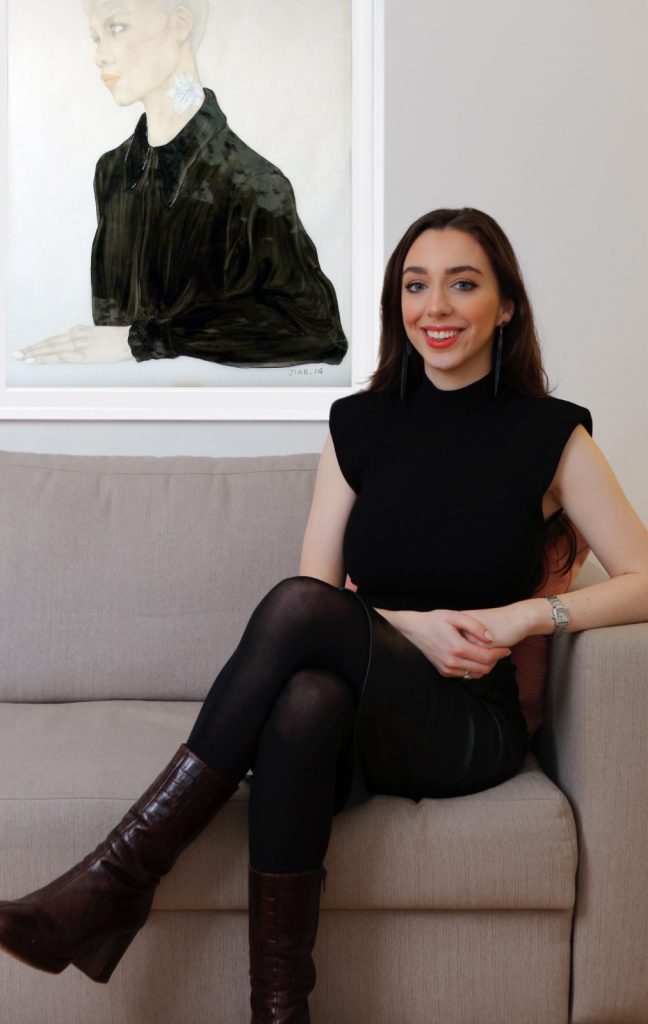Art Collectors
What I Buy and Why: Art Dealers Elli and Millie Jason Foster on How They Collect as a Mother-Daughter Duo
The pair directs London's Gillian Jason Gallery.

The pair directs London's Gillian Jason Gallery.

Naomi Rea

Gallerists Elli and Millie Jason Foster are on a mission to uplift women artists. The mother-and-daughter duo are committed to identifying and supporting emerging female talent, and leveling up their careers on an international stage.
Together they direct London’s Gillian Jason Gallery after its founder and family matriarch Gillian Jason passed on the reins in 2017. Founded in the 1980s, the gallery was known as a champion of Modern British artists like David Bomberg and Walter Sickert. But the next generation has built upon that legacy and, under their care, has refocused on building the careers, and boosting the institutional visibility, of women artists.
Their personal collection echoes their ambitions as gallerists and centers work by women and non-binary artists. It’s full of gems including work by Bridget Riley, Tracey Emin, and Cecily Brown.
We caught up with Millie and Elli to discuss the artists on their radar, buying direct from artists’ studios, and the first work they bought together.
What was your first purchase?
Our first purchase together was Untitled (2005) by Tracey Emin. The diptych was created especially for the Waterstones dyslexia charity auction. Taken from the cover of her autobiography, Strangeland, Emin drew on her self-portrait to reflect how those with dyslexia have their own ways of seeing. This resonated with us.
What was your most recent purchase?
Heart Headed (2014) by Jiab Prachakul. Simple, evocative, and arresting, Jiab’s portraits never fail to let the viewer into a private moment in time. The piece is from Prachakul’s “Seven Blouses” series, in which each work depicts a different element of the artist’s personality. In Heart Headed, Jiab addresses the challenges she feels as a female artist—identifying as such in her own right but also conflicting with the expectations of Thai society, from which the artist originates.
Which works or artists are you hoping to add to your collection this year?
Tschabalala Self, Lynette Yiadom-Boakye, and Zanele Muholi. Each one of these women of color transcended not only gender inequalities but also those of race. These artists explore belonging from a unique gaze and promote a conversation about what it means to be a citizen of the world today, replete with all the inherent power, gender, and race struggles.
What is the most expensive work of art that you own?
Gillian left a small Orovida Pissarro drawing of a tiger to all of her grandchildren. This was an indication of the raw strength that she felt all of her family has. It is priceless to us. Although we live and breathe the art business, intrinsically all art is a unique rendering of a thought enshrined in a moment in time.
Where do you buy art most frequently?
We like to buy direct from artists’ studios when possible. The gallery is committed to supporting new and emerging artists and if there is one thing we have learned over the years, it is to create a personal collection that features the artists we work alongside. The collection will endure and we look forward to handing it down to the other women in our family.
Is there a work you regret purchasing?
There are no regrets, just missed opportunities.
What work do you have hanging above your sofa? What about in your bathroom?
Elli has a stunning Fiona Rae titled Predator (1998). It is undoubtedly one of our favorite paintings. With each look, the story it tells becomes richer and stronger. It is a conversation piece and a beautiful artifact all at the same time. To me, that is the pinnacle of what we love about collecting art. To the same end we have a beautiful and intimate portrait of joy by Emma Hopkins hanging in the bathroom. Hopkins shows us the free and unadulterated joy that we might feel no matter what our bodies say about us.
What is the most impractical work of art you own?
As a whole, works on paper always need to be hung in good ambient light but out of direct sunlight. No matter how many electric lights and lamps we seem to have at home they are never quite in the right place. But this comes from an ever-evolving collection that gets moved from room to room.
What work do you wish you had bought when you had the chance?
With the benefit of hindsight, Elli would have started her personal collection earlier. We would love to have another Bridget Riley work on paper, but they are in huge demand and very rare. Now, of course, there are other artists that we want to collect too.
If you could steal one work of art without getting caught, what would it be?
Medea (1889) by Evelyn de Morgan. De Morgan, a relatively lesser known painter of the last century, defied the expectations of her class and gender to become one of the most impressive artists of a generation. Her richly colored canvases featuring beautifully draped figures, deliver messages of feminism, spirituality, and the rejection of war and material wealth, making them incredibly relevant today. De Morgan’s interests are not so different from one of our favorite contemporary artists, Eleanor Johnson and her reimagination and representation of sorceresses and witchcraft—an element that has previously epitomized the persecution of women.
The virtual exhibition “Heart of the Matter: A Celebration of Female Artists” is on view online at Gillian Jason Gallery through April 15.